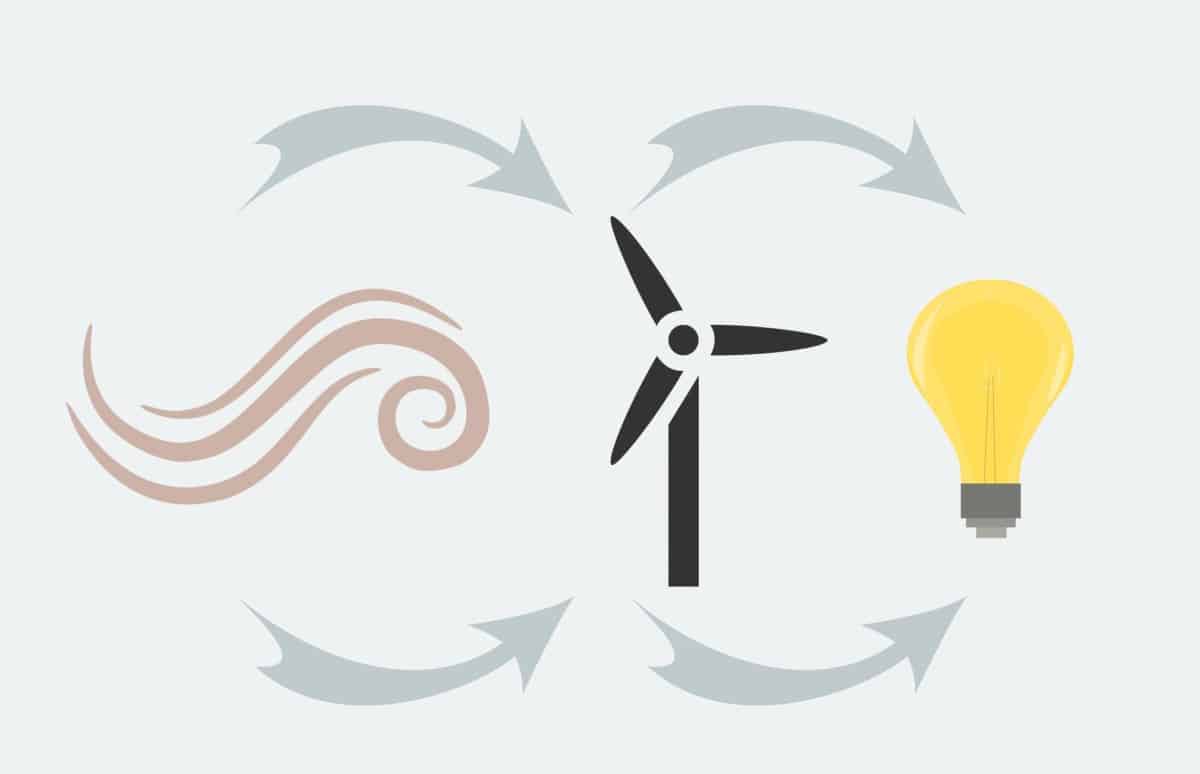How Does a Wind Turbine Generate Electricity?
Wind turbines have become an increasingly essential component of global renewable energy strategies. Particularly as the world seeks alternatives to fossil fuels. With the rise in climate change awareness, governments and industries are looking toward wind energy as a clean, efficient way to generate electricity. But how does a wind turbine generate electricity?
This question is at the heart of understanding the future of energy production and distribution.
This article explores the mechanics of wind turbines. The process by which they produce electrical power, and their role in both offshore and land-based wind farms.
Wind turbines work by converting the kinetic energy of the wind into electrical energy. A process that is highly dependent on several factors. Including wind speed, turbine design, and the efficiency of the electrical generator.
Understanding how wind turbines produce electricity is crucial as we transition to more sustainable energy sources. Like wind power, which now contributes significantly to the national grid in countries like the United States and the United Kingdom.
How Does a Wind Turbine Generate Electricity?
The Basics of Wind Energy
Wind turbines, whether located onshore or offshore, harness the power of the wind to generate electricity. The process starts with wind blowing across the rotor blades, creating lift in a way similar to airplane wings.
As the blades spin, they convert the kinetic energy of the wind into mechanical power. This rotational energy is then transferred to a drive shaft. Which powers an electrical generator, converting the mechanical energy into electrical energy.
Key Components of a Wind Turbine
- Rotor Blades: The turbine’s blades capture the wind’s energy and begin spinning. Larger turbines often have longer blades, increasing the potential to generate more electricity.
- Drive Shaft: The rotational energy from the spinning blades is transferred through the main shaft to the electrical generator.
- Electrical Generator: Once the mechanical energy reaches the generator, it is converted into electrical power. Ready to be distributed to the grid.
- Gear Box: In many turbines, a gear box is used to increase the rotational speed. From the slow-moving blades to a speed that allows for maximum power output.
- Yaw System: This component ensures that the turbine faces the direction of the wind, optimizing the amount of energy captured.
- Electrical Grid Connection: Once generated, electricity flows into the national grid, providing power to homes, businesses, and industries.
My article “How do Wind Turbines Work” explains the key components of a wind turbine in detail and also has info-graphics to assist.
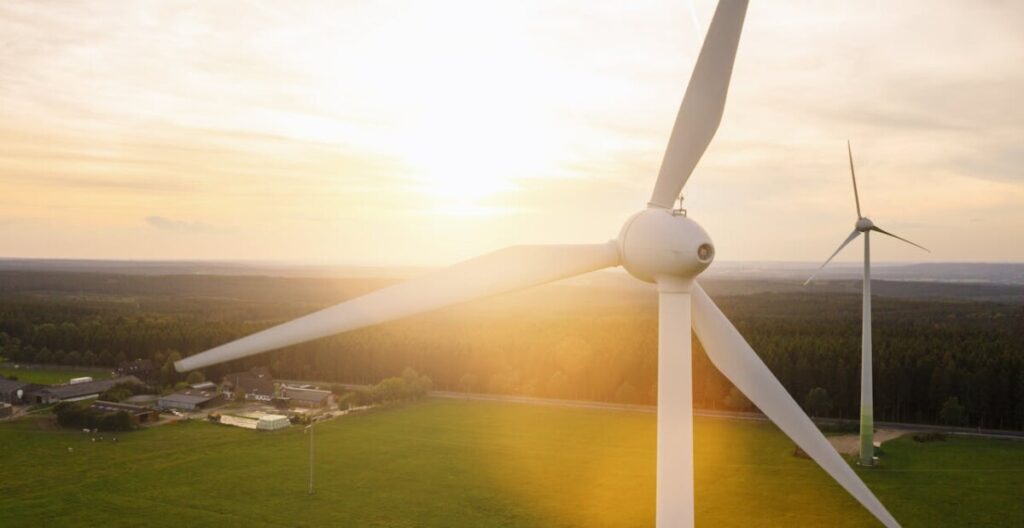
How Does Wind Speed Impact Power Generation?
Wind speed plays a critical role in determining how much electricity a turbine can produce. When the wind speed doubles, the energy output of the turbine increases by a factor of eight.
This is why areas with consistently strong winds, such as offshore wind farms, are preferred for large-scale wind energy projects.
Offshore wind turbines, in particular, are placed in areas with high wind speeds. Which allows them to generate much more energy compared to land-based turbines.
Types of Wind Turbines
There are two primary types of wind turbines: horizontal-axis wind turbines (HAWTs) and vertical-axis wind turbines (VAWTs).
Horizontal-axis wind turbines are the most common, with rotor blades that spin on a horizontal plane.
Vertical-axis wind turbines, on the other hand, have blades that rotate around a vertical axis. Making them suitable for locations with varying wind directions.
How Does a Wind Turbine Generate Electricity? (Continued)
How Does a Wind Turbine Convert Mechanical Power into Electrical Energy?
After the rotor blades capture the kinetic energy of the wind, this energy is transformed into mechanical power. The key component that facilitates this conversion is the electric generator.
The mechanical power, generated through the spinning blades and transferred via the drive shaft, turns the high-speed shaft of the generator.
Inside the generator, magnets rotate around a coil of wire, creating an electrical current through electromagnetic induction.
This electrical current is then routed into the power grid, providing electrical energy for distribution.
Interestingly, in some cases, direct drive turbines are used, eliminating the need for a gear box. These turbines connect the rotor directly to the generator, which reduces mechanical losses and maintenance needs.
This setup is particularly useful in offshore wind farms, where strong winds allow for large, high-capacity turbines.
The Role of Modern Wind Turbines
Modern wind turbines have come a long way from the first wind turbines developed in the late 19th century.
These advanced machines are designed to maximize energy efficiency, with improvements in turbine design, rotor blade length, and gear box technology.
Large turbines, for example, can produce much more energy due to their taller towers and larger rotor diameters. Which capture more wind over a greater area.
Turbines today can be as tall as skyscrapers, with blades the length of a football field, allowing them to generate enough electricity to power thousands of homes.
Additionally, improvements in turbine blades now allow them to withstand extreme wind conditions while maintaining a high rotational speed. Carbon fiber and other lightweight, durable materials have become standard in blade construction, allowing turbines to operate more efficiently. Even in lower wind speeds.
Offshore Wind Farms vs. Onshore Wind Farms
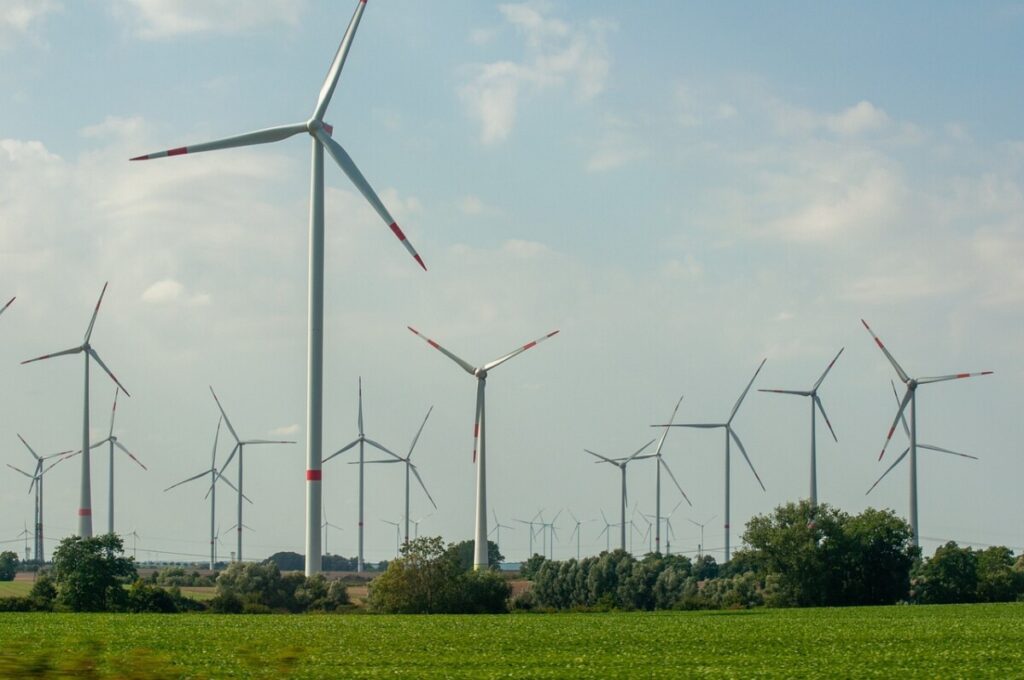
The growing trend of offshore wind farms has contributed significantly to the renewable energy sector.
Offshore locations, such as those in the United Kingdom and parts of the United States, offer higher wind speeds and fewer land use restrictions, making them ideal for large-scale wind energy production.
Offshore wind turbines tend to be larger and have higher capacity factors than their onshore counterparts, meaning they produce more energy per unit of installed capacity.
Onshore wind farms, on the other hand, are typically found in areas with wide-open spaces, such as the plains of the United States.
While they may not benefit from the strong winds available offshore, these land-based turbines still play a critical role in meeting the world’s growing electricity demands, particularly in regions where offshore installation is not feasible.
Environmental Impact and Climate Change
The environmental benefits of wind energy are clear. By producing clean energy from the power of the wind, wind turbines help reduce reliance on fossil fuels, which are the leading contributors to greenhouse gases such as carbon dioxide.
Wind energy also mitigates the harmful effects of climate change by producing power without emitting pollutants.
In contrast to conventional power stations, which burn coal, oil, or natural gas, wind turbines offer a renewable energy source that can be replenished as long as the wind blows.
The Role of Wind Turbines in Hybrid Energy Systems
In some cases, wind energy is combined with other forms of renewable energy, such as solar energy, to create hybrid energy systems.
These systems balance the intermittent nature of wind and solar power, ensuring a more reliable electricity supply.
For example, when wind speeds are low, solar panels can compensate by generating power, and vice versa. Such systems are vital in areas with fluctuating weather patterns and varying wind conditions.
How Does a Wind Turbine Generate Electricity Frequently Asked Questions
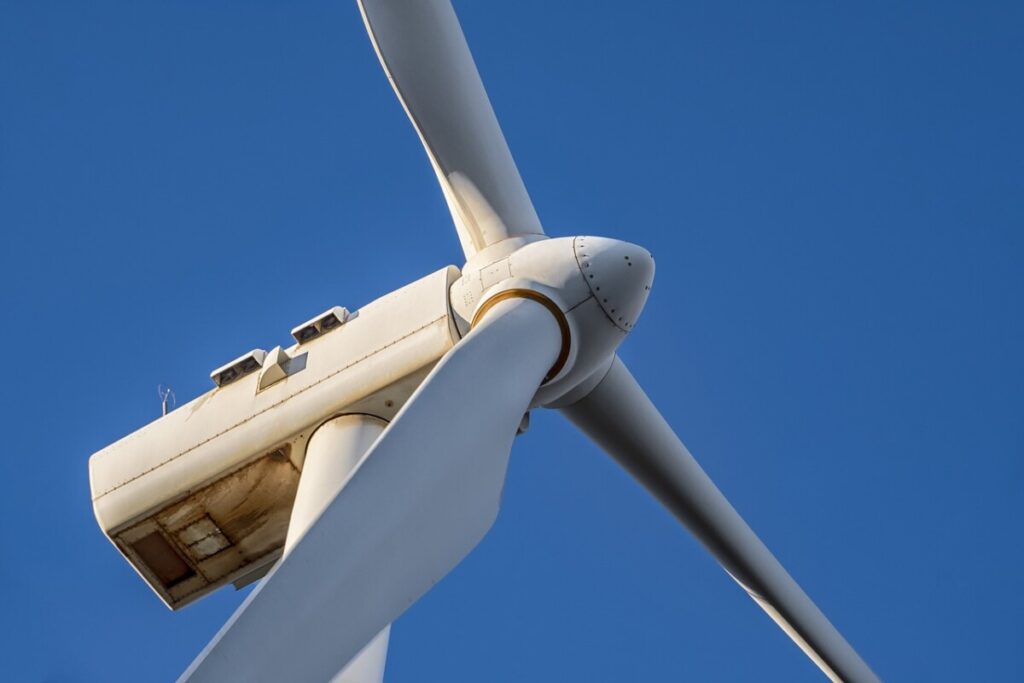
How much energy can a single wind turbine produce?
The amount of energy a single wind turbine can produce depends on its size, location, and wind speed. Large wind turbines can generate between 1 to 8 megawatts of electricity, enough to power hundreds or even thousands of homes.
How does wind speed impact energy production?
When wind speed doubles, the turbine can produce eight times more energy. This is why turbines are often located in areas with strong winds to maximize energy output.
What is the role of the U.S. Department of Energy in wind power?
The U.S. Department of Energy supports research and development in wind energy technologies, helping improve turbine efficiency and reduce costs, while promoting offshore wind power.
What are the differences between horizontal-axis wind turbines and vertical-axis wind turbines?
Horizontal-axis wind turbines are the most common, with rotor blades that rotate horizontally. Vertical-axis wind turbines have blades that rotate around a vertical axis, and they are often used in areas with varying wind directions.
How Does a Wind Turbine Generate Electricity? (Continued)
Advantages of Wind Energy Over Fossil Fuels
Wind energy offers several advantages over traditional fossil fuel-based energy production. Unlike fossil fuels, which release harmful pollutants into the atmosphere, wind energy is a clean energy source that does not contribute to the emission of carbon dioxide or other greenhouse gases.
This not only helps reduce air pollution but also combats climate change, as wind turbines generate electricity without burning fuel.
Additionally, wind power is a renewable energy source. While fossil fuels are finite, wind is inexhaustible, as long as the planet’s weather systems continue to function.
Furthermore, the costs of maintaining and operating wind turbines are lower compared to conventional power stations.
Once a wind turbine is installed, the cost of generating electricity is minimal because there is no fuel cost.
What Is the Cut-In Speed and Why Is It Important?
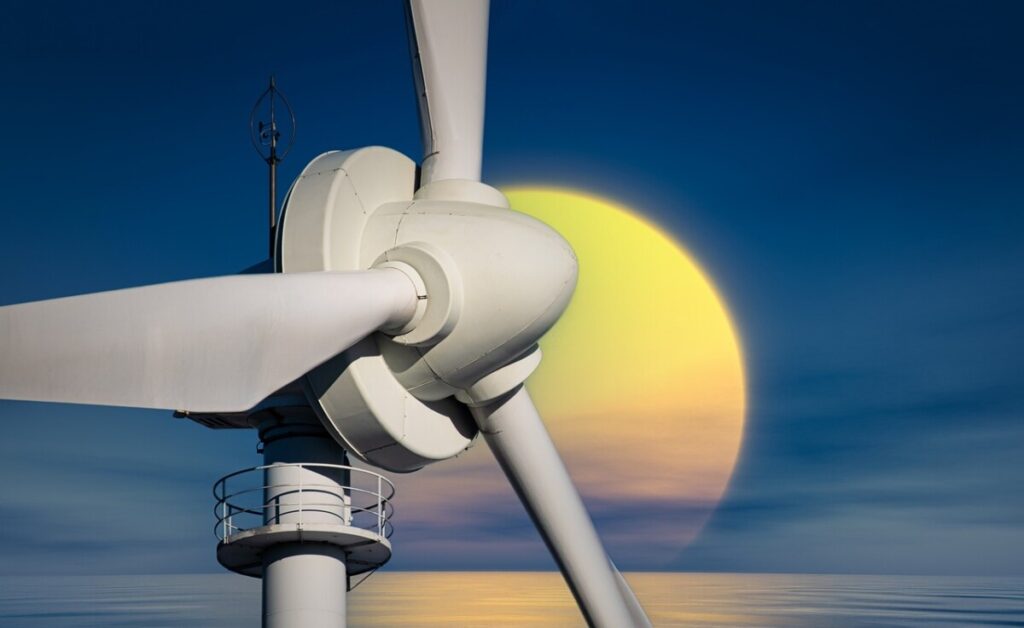
A critical factor in the performance of wind turbines is the cut-in speed, which is the minimum wind speed at which the turbine begins generating electricity.
Typically, modern wind turbines have a cut-in speed of around 3 to 4 meters per second (m/s). Below this speed, the turbine does not produce power, as the wind isn’t strong enough to turn the blades effectively.
However, when wind speeds rise above this threshold, the turbine begins converting the kinetic energy of the wind into mechanical and then electrical energy.
At this point, the turbine reaches its optimal efficiency, contributing to the electrical grid. When wind speeds become too high, the turbine may be stopped to prevent damage, though it typically operates at maximum power output at moderate wind speeds.
How Does a Wind Turbine Generate Electricity Efficiently?
Wind turbines are most efficient when they operate within specific wind speed ranges. This efficiency is often referred to as the turbine’s capacity factor, which is a measure of how much energy a turbine generates relative to its theoretical maximum.
The capacity factor depends on several factors, including the turbine’s size, the wind conditions at the installation site, and the turbine’s design.
Most turbines achieve a capacity factor of 30-50%. Meaning they produce about 30-50% of their maximum possible energy output over the course of a year.
This is primarily because the wind doesn’t blow consistently at full strength. Nonetheless, wind turbines can still produce much electricity even in areas with moderate wind speeds, thanks to advancements in turbine technology.
How Are Wind Turbines Connected to the National Grid?
Once wind turbines generate electricity, the power is sent through distribution networks to reach homes, businesses, and industries.
This connection to the national grid is essential for ensuring that the electricity generated by wind turbines is available to meet the country’s electricity demand.
In the United States, wind energy is now a significant contributor to the national energy mix, supplying power to millions of homes.
The electricity generated by turbines is typically in direct current (DC) form. It is then converted to alternating current (AC), which is compatible with the electrical grid.
This process ensures that the electrical power produced can be distributed efficiently over long distances and integrated with other energy sources in the grid.
Types of Wind Turbines and Their Applications
Horizontal-Axis Wind Turbines (HAWT)
As mentioned earlier, horizontal-axis wind turbines (HAWT) are the most common type of wind turbine.
The blades rotate horizontally and are positioned upwind of the tower, which allows them to capture the most wind energy.
These turbines are generally used in large wind farms and are the go-to choice for offshore wind energy projects due to their high efficiency and power output.
Vertical-Axis Wind Turbines (VAWT)
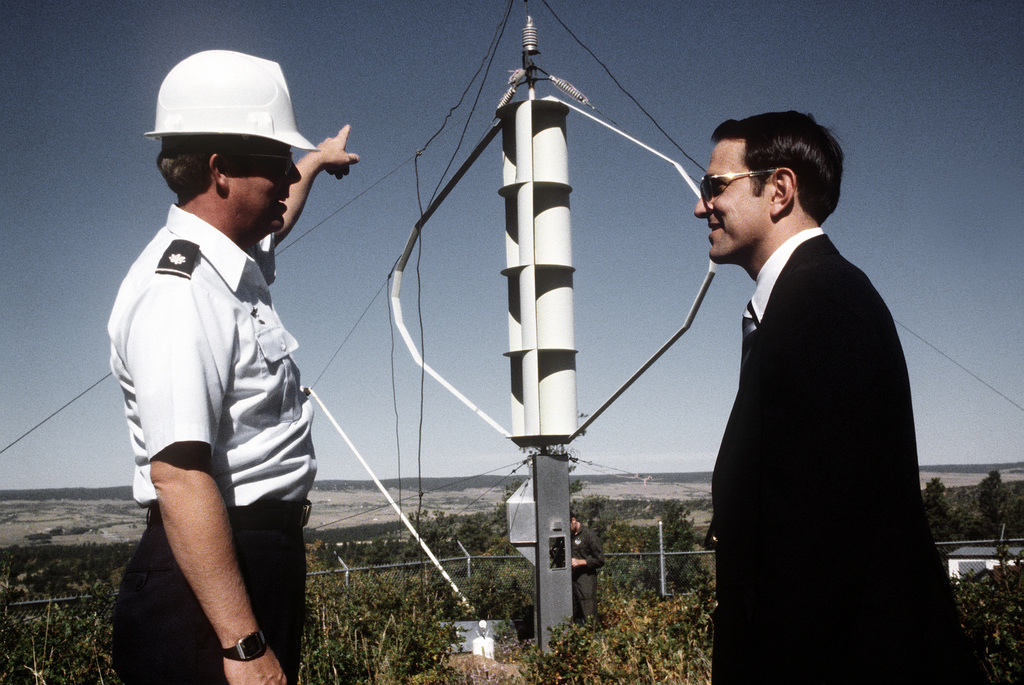
Vertical-axis wind turbines (VAWT), while less common, are more suited to environments with varying wind directions.
These turbines have blades that spin around a vertical axis and can capture wind from any direction. Making them useful in urban settings or areas with turbulent wind patterns.
Although less efficient than HAWTs, they have the advantage of being more compact, making them suitable for small wind turbines used for individual homes or businesses.
Wind Energy in the United States and the United Kingdom
Both the United States and the United Kingdom have been leaders in the deployment of wind energy. In the U.S., states like Texas, Iowa, and California lead the country in wind energy production. Contributing significantly to the nation’s renewable energy goals.
The U.S. Department of Energy has been instrumental in advancing wind energy technologies, with a focus on expanding both onshore and offshore wind projects.
In the United Kingdom, wind energy has been a key player in reducing the nation’s dependence on fossil fuels.
The offshore wind farms along the UK’s coastlines provide substantial amounts of energy to the grid, helping to meet the country’s carbon reduction targets.
In fact, offshore wind turbines in the UK often generate more power than their onshore counterparts due to the stronger, more consistent winds found at sea.
The Future of Wind Energy
Wind energy continues to grow as a critical component of the global shift toward renewable energy sources.
Innovations in wind turbine design, including more efficient rotor blades, improved drive shaft systems, and advancements in electric generator technology, are making wind power more reliable and cost-effective.
The trend of deploying large numbers of turbines in both onshore and offshore locations shows no signs of slowing down.
As the world moves toward greener energy solutions, wind energy will remain at the forefront of the fight against climate change.
The potential to reduce carbon dioxide emissions and provide cleaner air and a healthier environment is a significant motivator for the ongoing investment in wind technologies.
How Does a Wind Turbine Generate Electricity FAQs
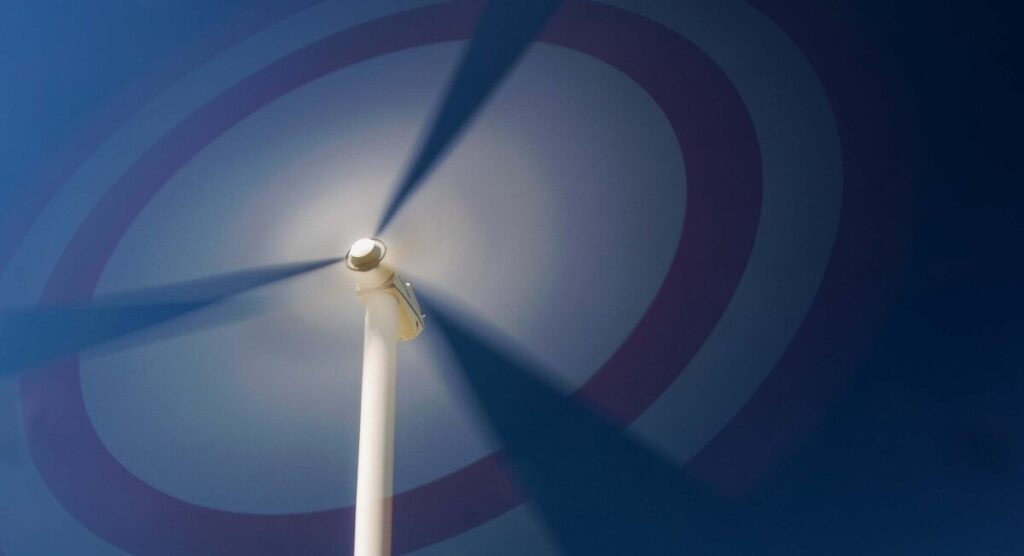
How much energy does a wind turbine produce over a year?
The energy output of a wind turbine varies based on size, location, and wind conditions. A large wind turbine can produce between 1.5 and 8 megawatts of power. Translating to enough energy to power hundreds to thousands of homes over the course of a year.
What is the role of the gear box in a wind turbine?
The gear box increases the speed of the turbine’s rotor, transferring the slower rotation of the blades to a higher speed that is suitable for generating electricity. This allows the turbine to achieve maximum power output efficiently.
What is the impact of wind energy on electricity costs?
Wind energy has been shown to lower electricity costs by reducing the reliance on expensive and volatile fossil fuel markets. As wind energy becomes more widespread, its contribution to the national grid helps stabilize energy prices.
How do offshore wind turbines differ from onshore wind turbines?
Offshore wind turbines are typically larger and more powerful than onshore turbines, as they are positioned in areas with stronger and more consistent winds. Offshore wind farms are ideal for generating large amounts of electricity with fewer turbines.
How Does a Wind Turbine Generate Electricity? (Final Part)
How Does Wind Energy Compare to Solar Energy?
Both wind and solar energy are important renewable energy sources that help reduce our reliance on fossil fuels.
While wind turbines convert the kinetic energy of the wind into electricity, solar panels capture sunlight and convert it into electrical power.
These technologies are often seen as complementary rather than competing, as they each have distinct advantages.
For instance, wind turbines can generate electricity day and night, provided there is wind. Whereas solar panels rely on daylight to function.
In areas with strong winds, especially during nighttime, wind energy can be an excellent complement to solar power in hybrid energy systems.
This balance between wind and solar ensures a more consistent energy output, making it easier to meet electricity demand throughout the day and night.
Together, wind and solar energy help reduce greenhouse gases and provide a sustainable, long-term solution to the world’s energy needs.
The Economic and Social Benefits of Wind Energy
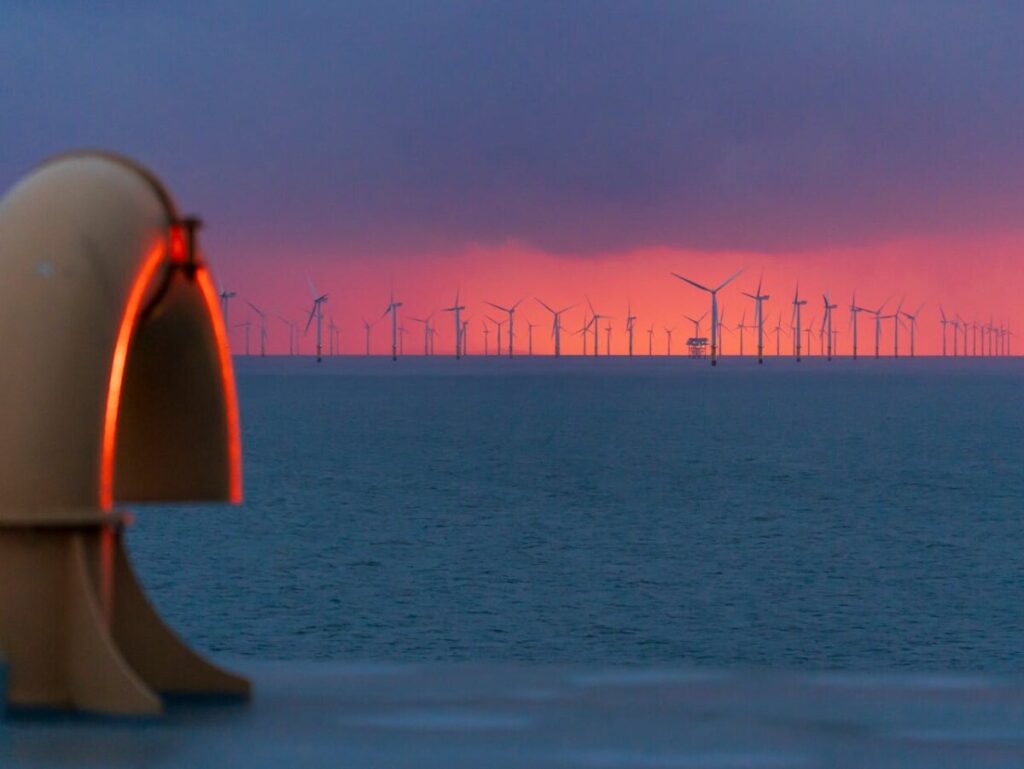
Wind energy not only provides environmental benefits but also brings economic and social advantages. In regions where wind farms are established, such as the United States and United Kingdom, job creation is one of the most immediate impacts.
The wind industry supports thousands of jobs, from turbine design and manufacturing to installation, maintenance, and grid management.
These jobs help boost local economies, particularly in rural or coastal areas where onshore wind farms and offshore wind farms are prevalent.
In addition to job creation, wind energy helps to diversify the energy supply. Reducing the risks associated with fluctuating fuel prices and availability.
By investing in wind power, countries can become less reliant on imported fossil fuels. Leading to greater energy security and resilience.
As the cost of wind energy continues to decline, it is becoming an increasingly attractive option for countries seeking to reduce their carbon dioxide emissions while meeting the growing demand for electricity production.
Wind Turbine Maintenance and Longevity
Like any large infrastructure, wind turbines require regular maintenance to ensure they operate efficiently over their lifespan. Which typically ranges between 20 and 25 years.
Maintenance tasks include checking the turbine blades, lubricating moving parts, inspecting the drive shaft and gear box, and ensuring the yaw system is functioning correctly.
Routine maintenance is crucial because even a small issue, such as blade damage, can reduce the turbine’s efficiency and lower its energy output.
Technological advancements have also led to the development of direct drive turbines, which have fewer moving parts and therefore require less maintenance than traditional gear-driven turbines.
These improvements are making wind turbines more reliable and reducing the overall cost of wind energy, making it more competitive with traditional fossil fuels.
How Does a Wind Turbine Generate Electricity Conclusion
Wind energy is a cornerstone of the global transition to renewable energy sources, offering a cleaner, more sustainable alternative to traditional fossil fuel-based power generation.
By understanding how a wind turbine generates electricity, we can appreciate the intricate engineering that goes into capturing the power of the wind and converting it into mechanical energy and then electrical energy.
From the rotational energy of the turbine blades to the efficient transfer of energy through the electrical generator, modern wind turbines have become sophisticated machines capable of producing enough electricity to power entire communities.
Whether used in offshore wind power projects or land-based turbines, wind energy continues to reduce our dependence on fossil fuels, combat climate change, and contribute to a cleaner, healthier environment for future generations.
The future of wind energy looks promising, with ongoing innovations in turbine technology, increased investments in offshore wind farms, and growing public and governmental support for clean energy.
As wind energy continues to expand, it will play a vital role in meeting global electricity demand and reducing harmful emissions, helping us move toward a more sustainable and resilient energy future.
How Does a Wind Turbine Generate Electricity FAQs (Continued)
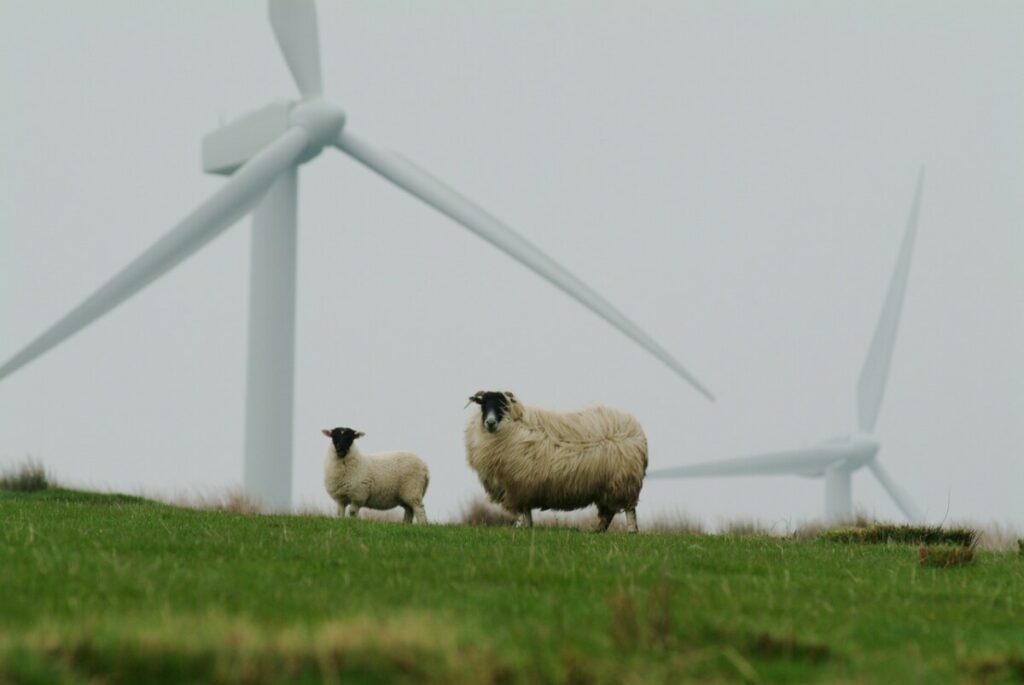
What is the environmental impact of wind energy?
Wind energy has a minimal environmental impact compared to traditional power stations that rely on fossil fuels. It does not produce air pollution or greenhouse gases, making it a key player in efforts to combat climate change.
How does wind energy fit into the national grid?
Wind energy is integrated into the national grid, where it is combined with other forms of energy, including solar and traditional power sources, to meet the overall demand for electricity.
Are wind turbines noisy?
While older models of wind turbines were sometimes considered noisy, modern turbines have been designed to minimize noise. In most cases, the sound of the wind itself masks any noise produced by the turbine.
Can wind turbines be installed at individual homes?
Yes, small wind turbines can be installed for use at individual homes or businesses. These turbines are often used as a distributed energy resource. Providing localized power generation and reducing reliance on the national grid.
How does wind energy contribute to reducing carbon emissions?
By producing electricity without burning fossil fuels, wind energy reduces the amount of carbon dioxide and other greenhouse gases released into the atmosphere, helping to slow the pace of climate change.
“Please feel free to share this post, ‘How does a wind turbine generate electricity,’ with your friends. And on social media so others can benefit too!”
For further information on Wind Turbines please read my factual article explaining How do Wind Turbines Work Without Wind.
Recent Posts
Understanding Energy and Electricity: The Power For Progress
Energy and Electricity Energy and electricity are integral components of modern life, powering everything from homes and businesses to transportation and communication. Without them, the...
The Future of Wind Energy The future of wind energy is set to play a critical role in addressing global energy needs while combating climate change. As renewable energy sources like wind and...


